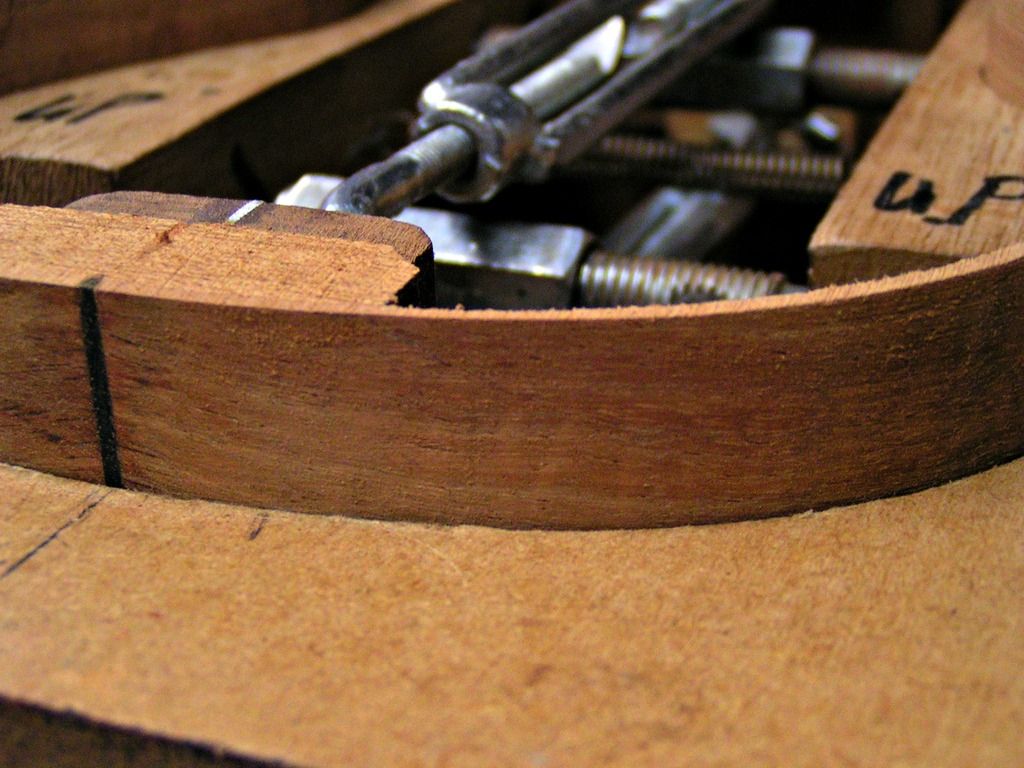ChuckBarnett
Well-known member
My first experience building. This is a tenor ukulele with sides and back of quilted maple. On the inside of the waist of both left and right sides I have break out. I bent this with a bending iron at roughly 325 to 350 degrees. Also on the outside opposite of the breakout is a dimple in the wood. Somebody said, this being a figured wood, the dimpling won't be of much consequence. It won't be visible unless you're looking for it.




